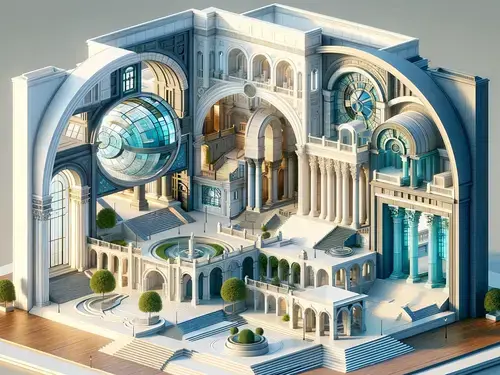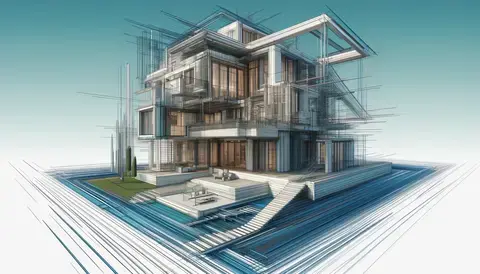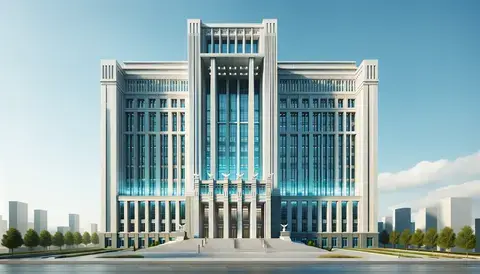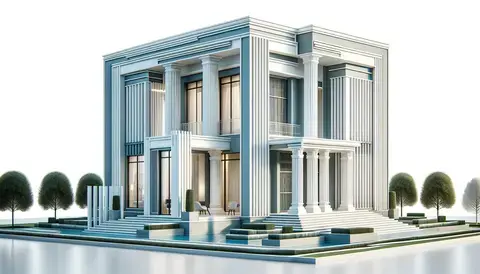Elements of Architectural Design
Fundamental Design Elements in Architecture and Building: Creating Harmony in Visual Design

Architecture and building design represent the ultimate fusion of creativity and precision, where artistic visions materialize into functional spaces. At the core of this discipline lie fundamental design elements, much like the blueprint of a structure. These elements provide the framework upon which architects and builders construct their creations. Whether you're an aspiring architect or someone passionate about the aesthetics of structures, this comprehensive exploration of design elements will guide you through the world of architectural and building design.
Understanding the Basics
Before we delve into the intricacies of architectural design elements, let's establish a shared understanding. These elements are the elemental constituents of any architectural masterpiece, whether it's a towering skyscraper, a serene residence, or a cultural landmark. These elements serve as the foundational elements upon which architectural designs are built.
In this article, we will study the essential architectural design elements, each playing a pivotal role in shaping the world of architecture and building design.
Section 1: The Power of Lines in Architecture
1.1 Types of Lines in Architectural Design
Lines, seemingly simple yet profoundly expressive, are the storytellers of architectural design. They guide the viewer's eye and convey emotions. There are several types of lines, each imbued with its own significance. In this section, we'll delve into the types of lines and their meanings in architectural design.
1.2 Utilizing Lines Effectively in Architecture
Knowing the different types of lines is just the beginning. How architects and designers wield lines in their creations is what truly matters. This section explores techniques for using lines effectively to create visual impact, structural strength, and aesthetic appeal in architectural design.
Section 2: Mastering Shape in Architectural Design
2.1 Exploring Shape in Architectural Design
Shapes, from the basic geometry of structures to the intricate forms of architectural marvels, are the building blocks of architectural design. They aren't just aesthetic entities; they communicate messages, define spaces, and evoke emotions. In this section, we'll explore the depth of shapes in architectural design.
2.2 The Language of Shapes in Architecture
Shapes have their own language in the world of architecture. Rectangles convey stability, while curves suggest dynamism. We'll dive into the nuanced meanings of various shapes and how architects use them strategically to shape spaces and convey design intentions.
Section 3: The Artistry of Color in Architectural Design
3.1 The Role of Color in Architectural Design
Color is a potent tool that influences the perception, mood, and identity of architectural structures. The role of color in architectural design is multifaceted, and we'll explore its significance. Learn how architects strategically use color to harmonize with surroundings and evoke emotional responses.
3.2 Color Harmony in Architectural Design
Color isn't just about individual choices; it's also about how colors harmonize within a structure's design. We'll explore color harmonies, such as complementary and analogous colors, and how they create visual cohesion in architectural projects.
Section 4: The Magic of Texture in Building Design
4.1 Engaging the Senses with Texture
Texture adds depth and character to buildings, whether it's a tactile sensation or a visual illusion. In this section, we'll explore how architects engage the senses through texture, from the roughness of exposed brick to the sleekness of glass facades.
4.2 Physical and Visual Texture in Building Design
Understanding the interplay between physical and visual texture is crucial in crafting architectural experiences. We'll distinguish between physical texture, which can be touched, and visual texture, which is an illusion created through materials and finishes.
Section 5: Shaping with Value in Architecture
5.1 The Role of Value in Architectural Design
Value, often referred to as shading or contrast, plays a pivotal role in creating visual depth and articulation in architectural structures. This section discusses the importance of value and how it gives life to architectural designs.
5.2 Creating Depth and Perception in Architecture
By mastering value, architects can make structures come to life. We'll explore how architects use value effectively to create three-dimensional compositions that captivate the eye and define spatial hierarchies.
Section 6: The Canvas of Space in Architecture
6.1 Defining Space in Architectural Design
Space isn't just an empty void in architecture; it's a fundamental element that defines functionality, relationships, and hierarchy within a structure. In this section, we'll discuss the significance of space in architectural design and how architects manipulate it.
6.2 Utilizing Positive and Negative Space in Architecture
Positive and negative space work in harmony to create balance and visual interest within architectural compositions. We'll explore how architects utilize space effectively to create structures that are both aesthetically pleasing and functionally efficient.
Section 7: Playing with Size and Scale in Building Design
7.1 The Impact of Size and Scale in Building Design
The size and scale of architectural elements profoundly influence the perceived importance and impact of those elements within a structure. In this section, we'll delve into techniques for effectively using size and scale to engage occupants and convey design intentions.
7.2 Creating Architectural Hierarchy with Size and Scale
Skillfully manipulating size and scale allows architects to emphasize key architectural elements and create a dynamic visual hierarchy. Learn how architects use size and scale to guide occupants' attention and interactions within built environments.
Section 8: The Power of Typography in Architectural Signage
8.1 Typography in Architectural Signage
Typography isn't just about choosing fonts; it's also about selecting the right typefaces and designing effective signage to convey information within architectural spaces. This section explores the art of typography in architectural signage and wayfinding.
8.2 Typography in Building Identity
Typography is a powerful design element in building identity. We'll explore how architects and designers use typography to communicate the purpose, history, and branding of architectural structures.
Applying the Principles of Design in Architecture
With a solid understanding of the fundamental architectural design elements, it's time to explore how these elements harmonize through design principles. Principles like balance, contrast, unity, and rhythm provide the framework for creating cohesive and visually appealing architectural designs. In the next section of this article, we'll delve into these principles and demonstrate how they work in synergy with the elements.
The Element of Direction
All lines have a specific direction, and they can be classified as horizontal, vertical, or oblique. Horizontal lines suggest calmness, stability, and tranquility, while vertical lines give a feeling of balance, formality, and alertness. Oblique lines suggest movement and action. The element of direction can profoundly influence the mood of a design.
Consciously deciding on the dominant direction when designing your home can significantly impact the overall atmosphere of the work. When designing a house, you can choose to emphasize either a horizontal, vertical, or oblique dominant direction. The examples below illustrate the effects of these different treatments. For instance, emphasizing horizontal lines tends to make your house appear sleek and clean, creating a relatively static and calm atmosphere. On the other hand, a diagonal dominance reinforces the dynamic and slightly chaotic nature of your house, while emphasizing a vertical direction maintains an element of random chaos while imparting a solid and formal feeling to your design.
Real Examples
Horizontal Lines:
- House With Horizontal Lines: A house with horizontal lines makes it look sleek and clean and creates a calm atmosphere

Diagonal Direction
- A house with diagonal direction: A house with diagonal direction reinforces the chaotic nature of the house

Vertical Direction
A government building that uses vertical lines to convey authority and formality.

Vertical Direction House: Vertical Direction House makes a house look solid and formal.

Architecture and building design are a fusion of artistry and functionality, where creativity and precision intertwine. Equipped with knowledge of the fundamental architectural design elements and the principles of design, architects and builders possess the tools to create visually stunning and functionally efficient structures. Whether you're an aspiring architect or an enthusiast of architectural aesthetics, understanding these elements deepens your appreciation of the built environment that surrounds us. So, embrace the power of design in architecture, for within these elements lies the potential to transform architectural visions into iconic structures that shape our world.
